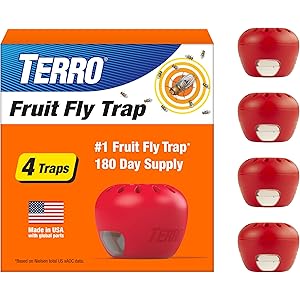As a passionate gardener, I often find myself standing in front of my garden beds, wondering just how many vegetables I should plant this season. The excitement of growing my own food intertwines with the anxiety of potentially overcrowding my garden or, conversely, not planting enough. If you’ve ever felt the same, you’re not alone! Today, I’m going to share my insights on how to calculate the perfect number of vegetables to plant, ensuring you make the most of your gardening space.
Understanding Your Gardening Space
The first step in calculating how many vegetables to plant is understanding the space available to you. Each garden is unique, and factors like sunlight, soil quality, and available space all play a crucial role in determining how many plants you can sustainably grow.
Assessing Garden Size
Begin by measuring the square footage of your garden. Use a tape measure to determine the length and width of your planting area. Multiply these two numbers together to get your total square footage. For example, if your garden is 10 feet long and 4 feet wide, the area is 40 square feet.
Once you have the total area, you can start planning. Keep in mind that not all vegetables require the same amount of space. This is where understanding the specific needs of each vegetable becomes essential.
Common Garden Dimensions
- Raised Beds: Typically 4 feet by 8 feet (32 square feet)
- In-Ground Gardens: Often larger, depending on available land
- Container Gardens: Sizes vary, but common containers are 5 to 15 gallons
Knowing Vegetable Spacing Requirements
Every vegetable has its own unique space requirements. Some plants need ample room to spread, while others can thrive in closer quarters. Here’s a quick guide on common vegetables and their spacing needs:
Vegetable Spacing Guide
- Tomatoes: 18-24 inches apart
- Carrots: 2-3 inches apart
- Peppers: 18-24 inches apart
- Lettuce: 6-12 inches apart
- Squash: 36 inches apart
When you know how much space each vegetable requires, you can start calculating how many of each type you can fit into your garden.
Calculating Plant Numbers
With your garden size and vegetable spacing requirements in mind, it’s time to crunch some numbers. Here’s a simple formula to help you determine how many vegetables to plant:
Total Garden Area (in square feet) / Space Needed per Plant (in square feet) = Number of Plants
Example Calculation
Let’s say I have a 40 square foot garden bed and I want to plant tomatoes, which require 2 square feet each (18-24 inches apart). Using the formula:
40 square feet / 2 square feet per tomato = 20 tomatoes
This means I can plant 20 tomato plants in my garden bed, assuming I want to maximize that space for tomatoes only.
Consider Crop Rotation and Succession Planting
As I plan my garden, I also think about crop rotation and succession planting to optimize my yield throughout the growing season. Here’s how each concept can help:
Crop Rotation
Crop rotation involves changing the types of vegetables grown in a particular area each season to prevent soil nutrient depletion and reduce pests and diseases. For instance, if I plant tomatoes in one bed this year, I might choose to plant legumes (like beans) in that same bed next year, as they enrich the soil with nitrogen.
Succession Planting
Succession planting allows me to maximize my harvest by planting crops at intervals. For example, I might plant lettuce every two weeks to ensure a continuous supply throughout the summer. By stagger planting, I can fit more crops into the same space over the growing season.
Utilizing Vertical Gardening Techniques
If I have limited space, vertical gardening techniques can be a game changer. By growing climbing vegetables like peas, cucumbers, and tomatoes on trellises or in containers, I can increase my planting density without taking up more ground space.
Benefits of Vertical Gardening
- Increases yield per square foot
- Improves air circulation, reducing disease
- Makes harvesting easier
Tips for Planning Your Garden
As I prepare my garden plan, I keep several tips in mind to ensure a successful growing season.
1. Start Small
If you’re new to gardening, I recommend starting with a small plot. This makes it easier to manage and allows you to learn as you go. Once I gained confidence, I gradually expanded my garden.
2. Research Companion Planting
Companion planting can enhance growth and deter pests. For example, planting basil near tomatoes can improve their flavor and repel harmful insects. I make it a point to research which plants thrive together.
3. Keep a Garden Journal
Documenting my garden’s progress helps me plan for future seasons. I jot down which vegetables did well, any issues I faced, and what I want to try next year. This practice has proven invaluable in honing my gardening skills.
Using Technology to Plan Your Garden
In today’s digital age, several apps and online tools can assist in garden planning. I often use them to visualize my garden layout and manage my planting schedule. Some popular gardening apps include:
- Garden Planner: Helps visualize plant spacing and layout.
- GrowIt!: Connects gardeners to share tips and experiences.
- Veggie Garden Planner: Allows you to plan your garden based on vegetable needs.
Case Studies: Successful Garden Plans
To illustrate the effectiveness of careful planning, let’s look at a couple of case studies of successful gardens.
Case Study 1: The Urban Gardener
My friend Sarah lives in a small urban apartment but managed to create a thriving container garden on her balcony. By using vertical planters and selecting compact vegetable varieties, she grows a variety of herbs, tomatoes, and peppers. Sarah calculated her planting based on her container sizes and the sunlight each plant requires, ensuring she maximizes her limited space.
Case Study 2: The Family Homestead
Another friend, Tom, runs a small homestead with his family. They practice crop rotation and succession planting on their 1-acre garden. By keeping a detailed journal and adjusting their planting strategy based on previous seasons’ results, they’ve increased their yield significantly over the years. They also utilize a mix of traditional rows and raised beds to optimize space.
Monitoring and Adjusting Your Plans
As the growing season progresses, I continually monitor my garden’s performance. If I notice certain vegetables thriving while others struggle, I adjust my plans accordingly. This might mean changing watering schedules, adding nutrients, or even shifting my crop rotation strategy for the following year.
Conclusion: Plant with Confidence
Calculating how many vegetables to plant is both an art and a science. By understanding your garden space, knowing each plant’s requirements, and employing strategies like crop rotation and succession planting, you can cultivate a thriving vegetable garden. Remember, gardening is a learning process, and every season offers new opportunities to refine your techniques.
As you embark on your gardening journey, I encourage you to share your plans and successes with friends and on social media. Let’s inspire each other to grow our own food and enjoy the fruits of our labor! Don’t forget to sign up for our newsletter for more tips and gardening insights!
Frequently Asked Questions
1. How do I know which vegetables grow well in my area?
Research your local climate and soil conditions. Joining local gardening clubs or forums can also provide valuable insights from experienced gardeners in your area.
2. Can I plant vegetables in containers?
Absolutely! Many vegetables grow well in containers, especially if you have limited space. Just ensure the containers are large enough and have proper drainage.
3. What is the best time to plant vegetables?
This varies by region and the specific vegetables you’re planting. Typically, spring is ideal for most vegetables, but some can be planted in the fall as well.
4. How can I improve my soil quality?
Adding organic matter such as compost, well-rotted manure, or other natural fertilizers can significantly improve soil quality and encourage healthy plant growth.
5. Should I use pesticides in my garden?
Consider using organic methods first, such as companion planting or introducing beneficial insects. If pesticides are necessary, choose organic options that are safe for your plants and the environment.
TERRO Fruit Fly Traps for Indoors (4 Pack) + 180 Days of Lure Supply
$17.49 (as of 13/11/2025 03:49 GMT -03:00 - More infoProduct prices and availability are accurate as of the date/time indicated and are subject to change. Any price and availability information displayed on [relevant Amazon Site(s), as applicable] at the time of purchase will apply to the purchase of this product.)
Sign up for our newsletter and stay up to date with exclusive news
that can transform your routine!




